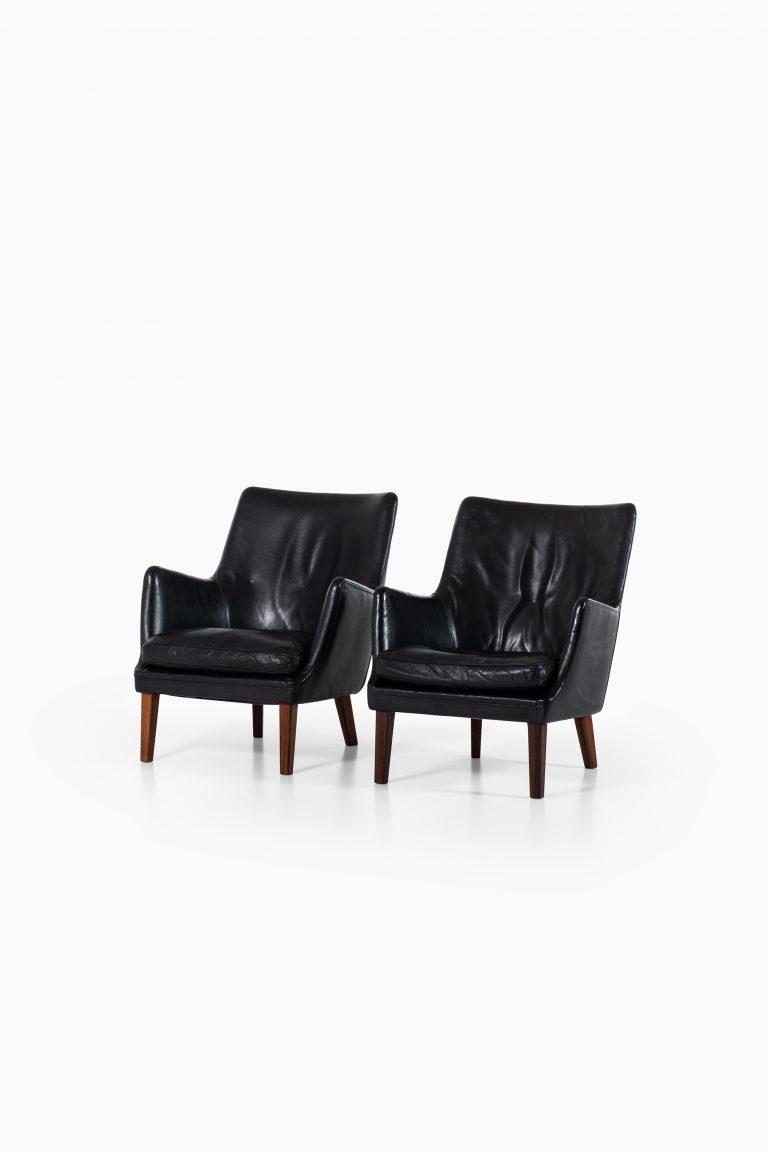Arne Vodder easy chair
This rare easy chair, model FD 164, was designed by Arne Vodder and produced by France & Daverkosen in Denmark during the 1960s. The chair’s frame is crafted from solid teak, exhibiting a warm reddish-brown tone with a fine, consistent grain. The design reflects Vodder’s signature blend of refined elegance and expressive sculptural elements. The seat and back cushions are upholstered in the original black leather, featuring deep button tufting and a smooth, semi-gloss finish. These cushions are removable and carefully structured to balance visual rhythm with ergonomic support.
The chair offers three adjustable reclining positions, facilitated by a concealed notched mechanism integrated into the teak frame. The backrest is supported by a double curved rail system that combines stability with flexibility. The angular teak frame is defined by tapering legs, gracefully curved armrests, and exposed joinery, all of which highlight the high level of craftsmanship involved in its construction. The teak finish is well preserved, showing minimal variation in color and a smooth surface.
The leather upholstery is in good vintage condition, displaying natural creasing and patina developed through use. The teak frame also shows light surface wear with minor scuffing and small marks consistent with age, but retains a well-maintained finish.
The chair measures 77.5 cm in width, 85 cm in depth, and 100 cm in height, with a seat height of 40 cm, approximately 30.5 inches wide, 33.5 inches deep, 39.4 inches high, and a seat height of 15.7 inches. This model is a significant example of mid-century Scandinavian seating design and illustrates Vodder’s collaboration with one of Denmark’s foremost manufacturers.
Dimensions (cm) | W: 77.5 / D: 85 / H: 100 / Seat H: 40 |
| Producer | France & Daverkosen |
| Color | Black |
| Decade | 1960s |
| Country | Denmark |
| Style | Danish modern, Mid Century, Scandinavian Modern |
| Material | Leather, Teak |
| Designed in | 1960s |
| Item Number | 134021 |
Arne Vodder
Arne Vodder was trained by Finn Juhl, who became his friend and business partner. Before concentrating on furniture alone, in 1951 he opened his own studio with the architect Anton Borg. Together they designed some 1,100 low-cost houses which prov...
Read more








